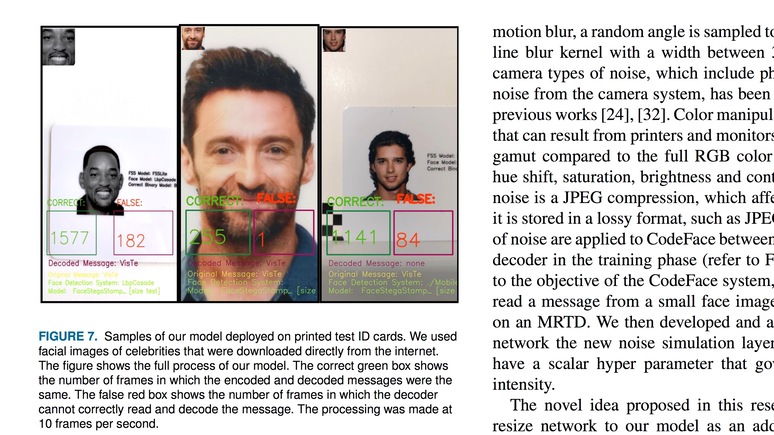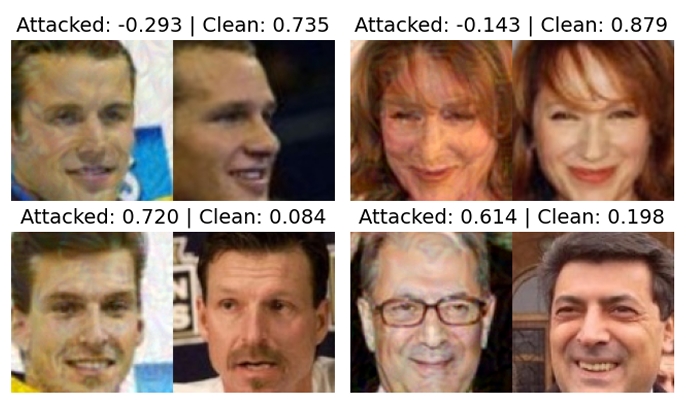
Featured in:
IEEE Access
Authors:
Farhad Shadmand, Iurii Medvedev and Nuno Gonçalves
Identity Documents (IDs) containing a facial portrait constitute a prominent form of personal identification. Photograph substitution in official documents (a genuine photo replaced by a non-genuine photo) or originally fraudulent documents with an arbitrary photograph are well known attacks, but unfortunately still efficient ways of misleading the national authorities in in-person identification processes. Therefore, in order to confirm that the identity document holds a validated photo, a novel face image steganography technique to encode secret messages in facial portraits and then decode these hidden messages from physically printed facial photos of Identity Documents (IDs) and Machine-Readable Travel Documents (MRTDs), is addressed in this paper. The encoded face image looks like the original image to a naked eye. Our architecture is called CodeFace. CodeFace comprises a deep neural network that learns an encoding and decoding algorithm to robustly include several types of image perturbations caused by image compression, digital transfer, printer devices, environmental lighting and digital cameras. The appearance of the encoded facial photo is preserved by minimizing the distance of the facial features between the encoded and original facial image and also through a new network architecture to improve the data restoration for small images. Extensive experiments were performed with real printed documents and smartphone cameras. The results obtained demonstrate high robustness in the decoding of hidden messages in physical polycarbonate and PVC cards, as well as the stability of the method for encoding messages up to a size of 120 bits.


© 2024 VISTeam | Made by Black Monster Media

Institute of Systems and Robotics Department of Electrical and Computers Engineering University of Coimbra